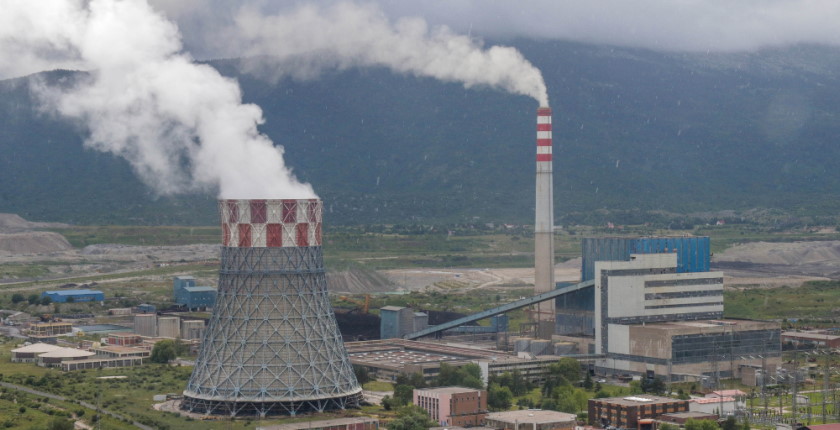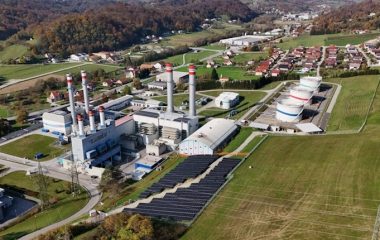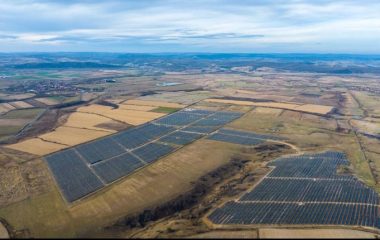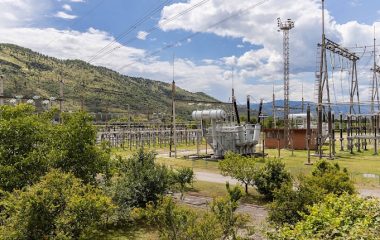
Photo: Center for Environment
Coal-fired power plants in the Western Balkans were in breach of Energy Community pollution rules in 2021 for the fourth year in a row. SO2 and NOx emissions dropped, but levels of microscopic dust – particulate matter or PM – have increased.
The Ugljevik coal plant in Bosnia and Herzegovina again emitted the most sulfur dioxide in the Western Balkans last year, 86,774 tons, despite having desulfurization equipment installed at a cost of EUR 85 million, CEE Bankwatch Network said in its Comply or Close report. Its SO2 emissions were similar to 2019.
The desulfurization system entered trial operations in December of that year and was inaugurated in October 2020, but without an operating permit.
Pljevlja is in different kind of breach
According to the report, dust emissions from coal plants included in national emission reduction plans (NERPs) in the region increased last year to nearly 1.8 times as much as allowed. The pollutant is also called particulate matter or PM particles. The level has been increasing every year, counting from the beginning of 2018, when the regulations were introduced. In 2021 it jumped almost 9% to 19,808 tons.
The group excludes the Pljevlja unit, Montenegro’s only coal-fired power plant, as it is in a so-called opt-out regime. But such facilities are supposed to halt production when they spend the 20,000 operating hours that they were awarded.
Instead, by the end of last year, Pljevlja clocked in 27,453 hours as its reconstruction project was delayed. The works officially began less than two months ago, though the unit will keep working until the start of the main phase. Albania has no coal plants.
SO2 emissions still five times higher than allowed
Although dropping by 20% last year, sulfur dioxide emissions from plants included in the NERPs of BiH, Kosovo*, North Macedonia and Serbia were still five times as high as allowed.
The combined level of nitrogen oxides (NOx) emissions remained below the sum of the countries’ ceilings for 2021: 0.9 times as much as allowed. It decreased by 16%. However, BiH and Kosovo* exceeded their limits. Furthermore, the allowed levels are reduced every year, so more breaches are likely in the coming years, the authors said.
All in all, coal plants in the region kept releasing extreme levels of toxins into the air every year since 2018, when the standards were introduced.
Gacko is biggest dust, NOx polluter
The biggest dust polluter in 2021 was the Gacko coal plant in BiH. Its emissions more than tripled to 4,960 tonnes, 16.3 times more than allowed by the country’s NERP. Kostolac A2 in Serbia was, for the first time, the worst offender in terms of breaching its individual SO2 ceiling. It emitted 13 times as much as allowed, followed by Tuzla 6 in BiH with 11.6, and Ugljevik and Kakanj 7 aren’t far behind.
Gacko also had the highest NOx exceedance, emitting more than twice as much as allowed, though Nikola Tesla (TENT) A4-A6 and B1 and B2 in Serbia emitted the most in absolute terms.
There is some good news. Kostolac B in Serbia finally started to decrease its sulfur dioxide emissions. Its desulfurization unit was inaugurated in 2017, but it didn’t have an operating permit as of early last month. Kostolac B emitted 26,015 tons of SO2 or 73% less than in 2020 but still 1.6 times as much as allowed.
Pollution issue fading amid series of outages in coal plants
Late last year, coal plants in Serbia, North Macedonia and Kosovo* were collapsing one after another. Coupled with poor hydrological conditions and high electricity import prices, the series of outages at the aging units diverted attention from tackling pollution, the report adds.
The breakdowns also provided a pretext for the Federation of Bosnia and Herzegovina, one of two entities making up BiH, to approve an illegal lifetime extension for the Tuzla 4 and Kakanj 5 units and for North Macedonia to activate oil-fired plant Negotino, which had not been used in 12 years, the document reads.


















How about the pollution from various wars that NATO countries imposed across our planet? Has anyone measured those pollution levels? At least coal is used to heat peoples homes, not destroy them by unnecessary polluters like bombs, bomber aircraft, tanks and lead bullets.